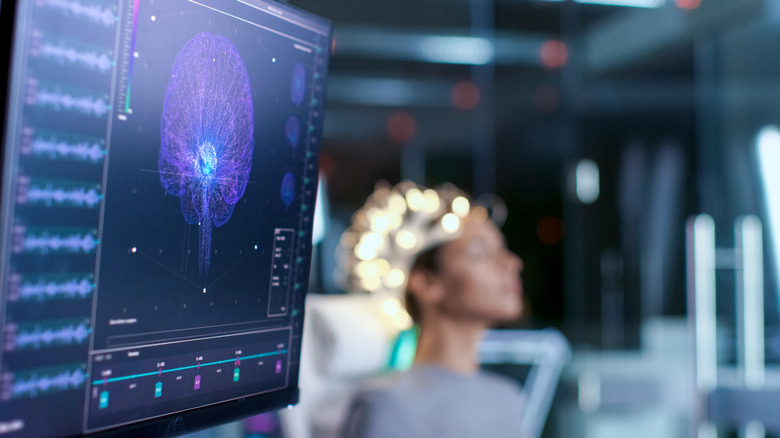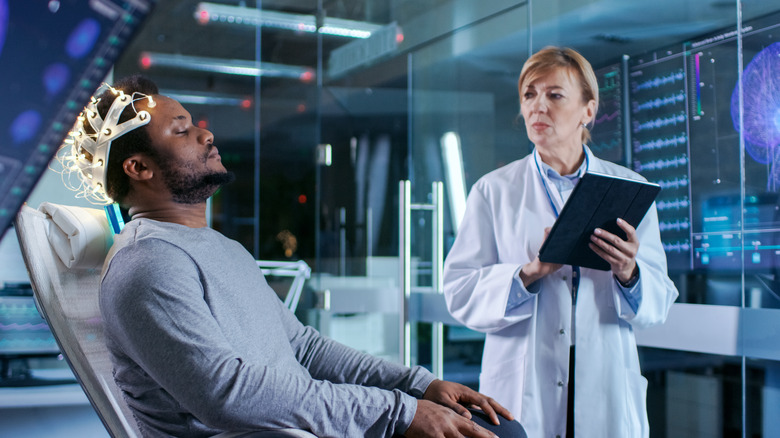What Can A Sleep Study Diagnose?
Someone you know may have participated in a sleep study — or perhaps you struggle with your own sleep issues and are considering one, but are not sure what to expect. According to the Mayo Clinic, the official term for a sleep study is polysomnography, which is a test that can record your brain waves while you're asleep.
The Mayo Clinic notes that you may stay overnight if you are having a polysomnography at a sleep center, and you can bring your own pajamas to sleep in. There will be a bathroom in your room, and it will resemble a hotel room. An audio system will allow the polysomnography technologists to speak with you and hear you from the monitoring area.
The Mayo Clinic illustrates how sensors are applied to your scalp, temples, chest, and legs with glue or tape. A clip will also be applied to your finger or ear to measure your blood oxygen levels. Once you fall asleep, your heart rate, eye movements, brain waves, and breathing patterns will be measured. Your body movements, as well as any snoring during sleep, will also be recorded (per Cleveland Clinic).
Once you've completed the sleep study the following morning, the next step is to head home and wait to receive the results from your doctor. Polysomnography observes a number of body functions and sleep behaviors, but what could a doctor diagnose you with once they receive the results?
When a sleep study is conducted, what can be diagnosed?
A sleep study is primarily used when a doctor believes that you might have a sleep disorder, such as sleep apnea, narcolepsy, chronic insomnia, periodic limb movement disorder, or REM sleep behavior disorder, according to Medscape. Your doctor can learn a lot about what's going on while you're asleep from the results of your sleep study.
The Mayo Clinic reports that if you have narcolepsy or REM sleep behavior disorder, your brain waves and eye movements during the study will provide your doctor with insight into what is disrupting your sleep stages. Your doctor may also observe irregularities in your heart rate, breathing rate, and blood oxygen levels if you have sleep apnea. If you experience frequent leg movements, that could suggest periodic limb movement disorder.
According to Johns Hopkins Medicine, sleep disturbances related to night terrors or sleepwalking and sleep talking can also be observed during a sleep study. There are no known risks associated with undergoing a sleep study besides mild irritation where the electrodes are placed. If you have trouble sleeping and are interested in having a sleep study, it could be helpful to speak with your primary care doctor.


